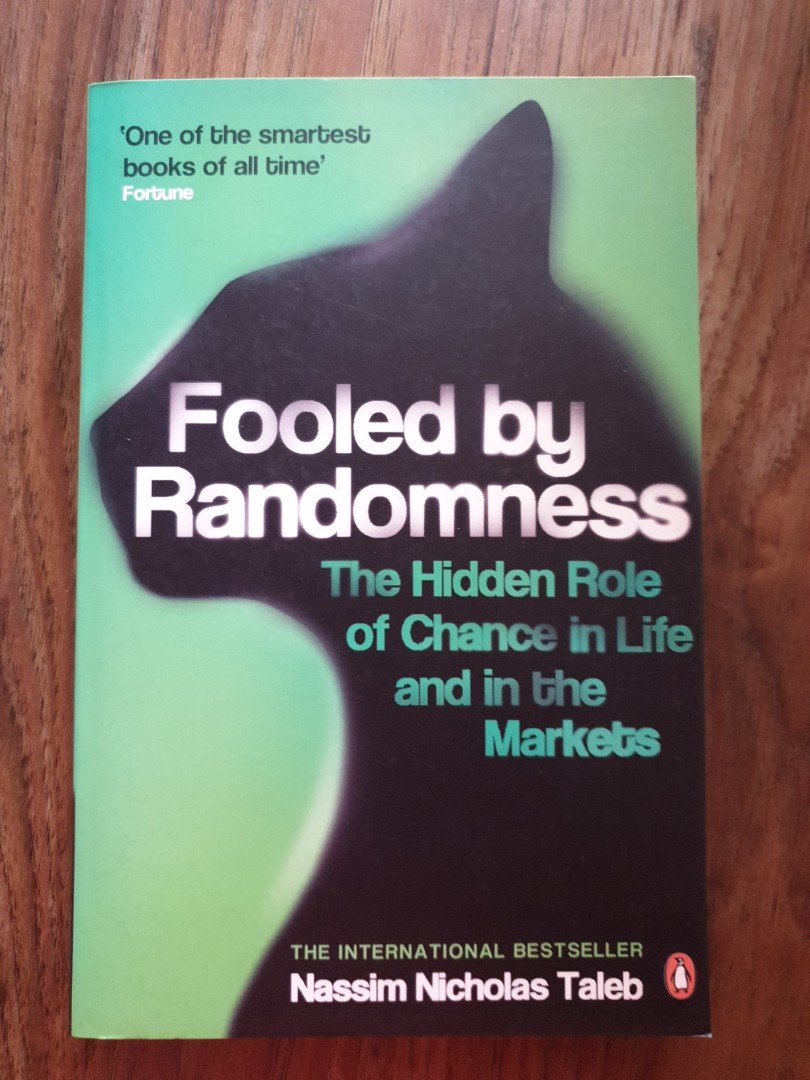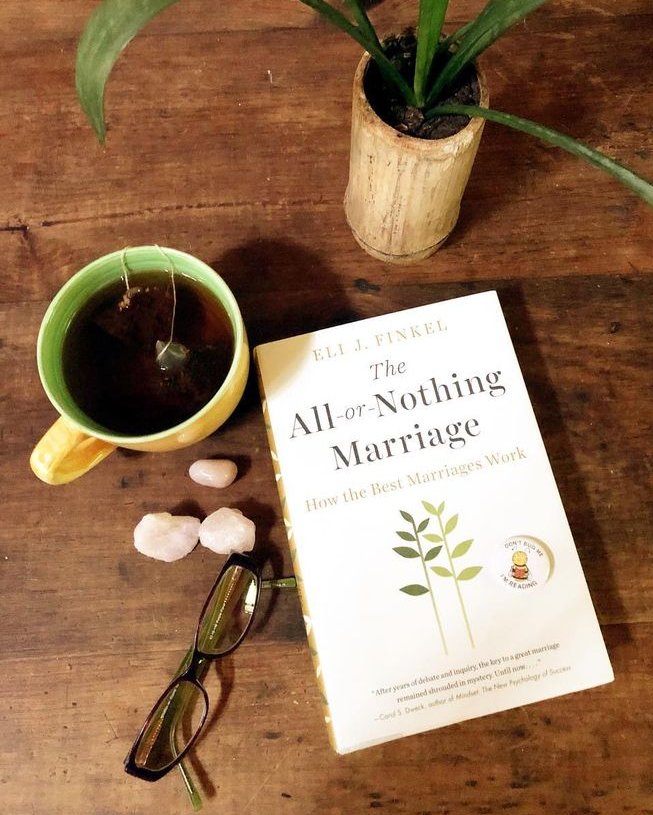Negative emotions of seeing your stocks drop > Positive emotion from seeing your stocks rise.
2 weeks ago, I started reading "Fooled by Randomness" by Nassim Taleb.
WOW, It's been mindblowing!
Thanks to @dvassallo 's recommendation.
Inside, there's a part he talks about how to deal with volatility.
Here’s 6 big lessons that are useful in the current market crash:

Negative emotions of seeing your stocks drop > Positive emotion from seeing your stocks rise.
Some psychologists estimate the negative effect for an average loss to be up to 2.5 the magnitude of a positive one)...
If the unpleasurable minute is worse in reverse pleasure than the pleasurable minute is in pleasure terms, then the dentist incurs a large deficit when examining his performance at a high frequency."
When we zoom out and check the prices less frequently, we are less affected by negative emotions.
Because over a longer time horizon, the market tends to rise more than it goes down.
As 67% of his months will be positive, he incurs only four pangs of pain per annum and eight uplifting experiences...
Now consider the dentist looking at his performance only every year.
Over the next 20 years that he is expected to live, he will experience 19 pleasant surprises for every unpleasant one!
The dentist did better when he dealt with monthly statements rather than more frequent ones.
Perhaps it would be even better for him if he limited himself to yearly statements."
When we look at something too closely, we tend to mix up the signal with all the noise.
We end up focusing on all the movements that may not carry much useful information at all!
In other words, one sees the variance, little else.
I always remind myself that what one observes is at best a combination of variance and returns, not just returns"
It’s hard to fight our human emotions of fear.
Instead, it’s wiser to just create an environment where we are not exposed to such noise that affect our decision making.
But I deal with it by having no access to information, except in rare circumstances.
Again, I prefer to read poetry. If an event is important enough, it will find its way to my ears...
Mostly that I am incapable of taming my emotions facing news and incapable of seeing a performance with a clear head.
Silence is far better."
Don't read the news.
It’s full of noise because of how much data it contains.
Instead, spend more time studying history as it’s more zoomed out.
This explains why I prefer not to read the newspaper (outside of the obituary), and why I never chitchat about markets."
The actions we take after seeing a loss is different from the actions we take after seeing a gain.
This could cause us to make sub optimal decisions
The degree of rationality in decisions made subsequent to a gain is extremely different from the one after a loss."
I share how I crossed 7 figures before age 30, and achieved my own version of financial freedom.
Stuff I tweet about:
• My investing strategy
• Books that inspire me
• How I built high income skills i.e. public speaking
More from Max Koh
10 super simple steps to research a stock.
In just 3-4 hours:
Overview:
1. Find a sexy angle
2. Analyze the financials
3. Read the annual report
4. Get skin in the game
5. Read earnings calls
6. Understand the leader
7. Understand value prop
8. Read analysis by others
9. Monitor execution
10. Maintenance due diligence
Lets go!
1. Find a sexy story or angle
This is how I begin my research.
It starts with either:
• a product
• a story
• a founder
... that gets me curious.
I think stock screeners are helpful...
But I don’t use them.
I prefer to research companies that genuinely excite me.
2. Analyze the financials
I then proceed to analyze the numbers for the last 2-3 years.
Which is about 8-12 quarters.
Stuff like:
- Revenue growth
- Gross and EBIT margins
- Key customer metrics
- Free cash flow
Seeing the numbers tells me a story.
3. Read the annual report
If the numbers and story are exciting...
I dig deeper into the business through the 10K.
I want to understand the business model...
How they make money...
And the customers they serve.
A step by step guide for
In just 3-4 hours:
Overview:
1. Find a sexy angle
2. Analyze the financials
3. Read the annual report
4. Get skin in the game
5. Read earnings calls
6. Understand the leader
7. Understand value prop
8. Read analysis by others
9. Monitor execution
10. Maintenance due diligence
Lets go!
1. Find a sexy story or angle
This is how I begin my research.
It starts with either:
• a product
• a story
• a founder
... that gets me curious.
I think stock screeners are helpful...
But I don’t use them.
I prefer to research companies that genuinely excite me.
2. Analyze the financials
I then proceed to analyze the numbers for the last 2-3 years.
Which is about 8-12 quarters.
Stuff like:
- Revenue growth
- Gross and EBIT margins
- Key customer metrics
- Free cash flow
Seeing the numbers tells me a story.
3. Read the annual report
If the numbers and story are exciting...
I dig deeper into the business through the 10K.
I want to understand the business model...
How they make money...
And the customers they serve.
A step by step guide for
How to read an Annual Report in 1 hour.
— Max Koh (@heymaxkoh) April 4, 2022
A step by step guide for busy people:
I'm lucky to attain financial freedom before 30.
I credit Fintwit for my learnings.
Here's 10 key concepts every investor must know:
1. $$ needed to retire
2. Researching a business
3. Reading annual reports
4. Reading earnings calls
5. Criteria of a multi bagger
(Read on...)
6. Holding a multi bagger
7. Economic moats
8. When to buy a stock
9. Earnings vs cashflow
10. Traits of quality companies
Here's my 10 favourite threads on these concepts:
1. How much $$ do you need to retire
Before you start, you must know the end game.
To meet your retirement goals...
How much $$ do you need in your portfolio?
10-K Diver does a good job explaining what's a safe withdrawl rate.
Hint: It's NOT
2. Research a business
Your investment returns are a lagging indicator.
Instead, your research skills are the leading predictor of your results.
Conclusion?
To be a good investor, you must be a great business researcher.
Start with
3. Reading annual reports
This is the bread and butter of a good business analyst.
You cannot just listen to opinions from others.
You must learn to deep dive a business and make your own judgments.
Start with the 10k.
Ming Zhao explains it
I credit Fintwit for my learnings.
Here's 10 key concepts every investor must know:
1. $$ needed to retire
2. Researching a business
3. Reading annual reports
4. Reading earnings calls
5. Criteria of a multi bagger
(Read on...)
6. Holding a multi bagger
7. Economic moats
8. When to buy a stock
9. Earnings vs cashflow
10. Traits of quality companies
Here's my 10 favourite threads on these concepts:
1. How much $$ do you need to retire
Before you start, you must know the end game.
To meet your retirement goals...
How much $$ do you need in your portfolio?
10-K Diver does a good job explaining what's a safe withdrawl rate.
Hint: It's NOT
1/
— 10-K Diver (@10kdiver) July 25, 2020
Get a cup of coffee.
In this thread, I'll help you work out how much money you need to retire.
2. Research a business
Your investment returns are a lagging indicator.
Instead, your research skills are the leading predictor of your results.
Conclusion?
To be a good investor, you must be a great business researcher.
Start with
1/ Thoughts on Research Process
— Mostly Borrowed Ideas (@borrowed_ideas) September 27, 2021
I was invited to present my research process at a college in the US. I am sharing all ten slides here. pic.twitter.com/z0tjZcogfH
3. Reading annual reports
This is the bread and butter of a good business analyst.
You cannot just listen to opinions from others.
You must learn to deep dive a business and make your own judgments.
Start with the 10k.
Ming Zhao explains it
\U0001f9d0How to Read 10Ks Like a Hedge Fund\U0001f9d0
— Ming Zhao (@FabiusMercurius) May 7, 2021
\u201cFundamentals don\u2019t matter anymore!\u201d I\u2019ve heard this a lot lately on Fintwit.\U0001f644
But, for those who\u2019ve diversify beyond $GME and $DOGE, here\u2019s a primer on what metrics fundamental buy-side PMs look at and why:
(real examples outlined)
\U0001f447 pic.twitter.com/tLlNRvpnDK
More from Books
You May Also Like
#ஆதித்தியஹ்ருதயம் ஸ்தோத்திரம்
இது சூரிய குலத்தில் உதித்த இராமபிரானுக்கு தமிழ் முனிவர் அகத்தியர் உபதேசித்ததாக வால்மீகி இராமாயணத்தில் வருகிறது. ஆதித்ய ஹ்ருதயத்தைத் தினமும் ஓதினால் பெரும் பயன் பெறலாம் என மகான்களும் ஞானிகளும் காலம் காலமாகக் கூறி வருகின்றனர். ராம-ராவண யுத்தத்தை

தேவர்களுடன் சேர்ந்து பார்க்க வந்திருந்த அகத்தியர், அப்போது போரினால் களைத்து, கவலையுடன் காணப்பட்ட ராமபிரானை அணுகி, மனிதர்களிலேயே சிறந்தவனான ராமா போரில் எந்த மந்திரத்தைப் பாராயணம் செய்தால் எல்லா பகைவர்களையும் வெல்ல முடியுமோ அந்த ரகசிய மந்திரத்தை, வேதத்தில் சொல்லப்பட்டுள்ளதை உனக்கு
நான் உபதேசிக்கிறேன், கேள் என்று கூறி உபதேசித்தார். முதல் இரு சுலோகங்கள் சூழ்நிலையை விவரிக்கின்றன. மூன்றாவது சுலோகம் அகத்தியர் இராமபிரானை விளித்துக் கூறுவதாக அமைந்திருக்கிறது. நான்காவது சுலோகம் முதல் முப்பதாம் சுலோகம் வரை ஆதித்ய ஹ்ருதயம் என்னும் நூல். முப்பத்தி ஒன்றாம் சுலோகம்
இந்தத் துதியால் மகிழ்ந்த சூரியன் இராமனை வாழ்த்துவதைக் கூறுவதாக அமைந்திருக்கிறது.
ஐந்தாவது ஸ்லோகம்:
ஸர்வ மங்கள் மாங்கல்யம் ஸர்வ பாப ப்ரநாசனம்
சிந்தா சோக ப்ரசமனம் ஆயுர் வர்த்தனம் உத்தமம்
பொருள்: இந்த அதித்ய ஹ்ருதயம் என்ற துதி மங்களங்களில் சிறந்தது, பாவங்களையும் கவலைகளையும்

குழப்பங்களையும் நீக்குவது, வாழ்நாளை நீட்டிப்பது, மிகவும் சிறந்தது. இதயத்தில் வசிக்கும் பகவானுடைய அனுக்ரகத்தை அளிப்பதாகும்.
முழு ஸ்லோக லிங்க் பொருளுடன் இங்கே உள்ளது https://t.co/Q3qm1TfPmk
சூரியன் உலக இயக்கத்திற்கு மிக முக்கியமானவர். சூரிய சக்தியால்தான் ஜீவராசிகள், பயிர்கள்
இது சூரிய குலத்தில் உதித்த இராமபிரானுக்கு தமிழ் முனிவர் அகத்தியர் உபதேசித்ததாக வால்மீகி இராமாயணத்தில் வருகிறது. ஆதித்ய ஹ்ருதயத்தைத் தினமும் ஓதினால் பெரும் பயன் பெறலாம் என மகான்களும் ஞானிகளும் காலம் காலமாகக் கூறி வருகின்றனர். ராம-ராவண யுத்தத்தை

தேவர்களுடன் சேர்ந்து பார்க்க வந்திருந்த அகத்தியர், அப்போது போரினால் களைத்து, கவலையுடன் காணப்பட்ட ராமபிரானை அணுகி, மனிதர்களிலேயே சிறந்தவனான ராமா போரில் எந்த மந்திரத்தைப் பாராயணம் செய்தால் எல்லா பகைவர்களையும் வெல்ல முடியுமோ அந்த ரகசிய மந்திரத்தை, வேதத்தில் சொல்லப்பட்டுள்ளதை உனக்கு
நான் உபதேசிக்கிறேன், கேள் என்று கூறி உபதேசித்தார். முதல் இரு சுலோகங்கள் சூழ்நிலையை விவரிக்கின்றன. மூன்றாவது சுலோகம் அகத்தியர் இராமபிரானை விளித்துக் கூறுவதாக அமைந்திருக்கிறது. நான்காவது சுலோகம் முதல் முப்பதாம் சுலோகம் வரை ஆதித்ய ஹ்ருதயம் என்னும் நூல். முப்பத்தி ஒன்றாம் சுலோகம்
இந்தத் துதியால் மகிழ்ந்த சூரியன் இராமனை வாழ்த்துவதைக் கூறுவதாக அமைந்திருக்கிறது.
ஐந்தாவது ஸ்லோகம்:
ஸர்வ மங்கள் மாங்கல்யம் ஸர்வ பாப ப்ரநாசனம்
சிந்தா சோக ப்ரசமனம் ஆயுர் வர்த்தனம் உத்தமம்
பொருள்: இந்த அதித்ய ஹ்ருதயம் என்ற துதி மங்களங்களில் சிறந்தது, பாவங்களையும் கவலைகளையும்

குழப்பங்களையும் நீக்குவது, வாழ்நாளை நீட்டிப்பது, மிகவும் சிறந்தது. இதயத்தில் வசிக்கும் பகவானுடைய அனுக்ரகத்தை அளிப்பதாகும்.
முழு ஸ்லோக லிங்க் பொருளுடன் இங்கே உள்ளது https://t.co/Q3qm1TfPmk
சூரியன் உலக இயக்கத்திற்கு மிக முக்கியமானவர். சூரிய சக்தியால்தான் ஜீவராசிகள், பயிர்கள்



































